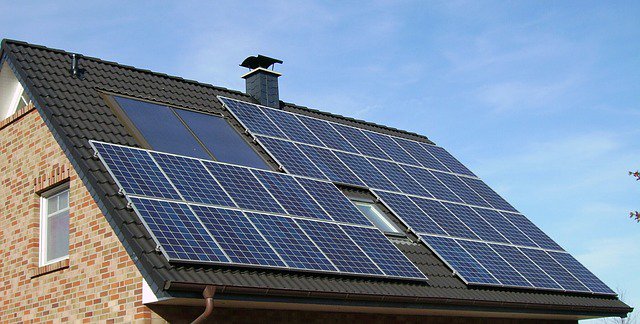I’ve been covering the solar power industry for more than a decade. I recall writing about the industry blowing up way back at the beginning, because annual installations did indeed climb rapidly compared to previous years. The nice thing about technology learning curves is that you can tell such stories over and over, and they continue to be exciting.
A few months ago, I noted that solar PV panels were 12× more expensive in 2010 than in 2020 (and 459× more expensive in 1977). Costs that drop like that lead to increasing adoption. And 2020 reportedly continued the trend. “Global demand for home solar has gone ‘through the roof’ in 2020,” according to Bloomberg New Energy Finance.
Despite the pandemic, Bloomberg New Energy Finance found that home solar PV installations were 21% higher in the first 7 months of 2020 compared to the first 7 months of 2019.
Bloomberg New Energy Finance’s postulation on why solar power installations grew so much was that people on lockdown became more aware of home energy costs and also just went on a stir-crazy home improvement frenzy (or simply had the time for a home improvement frenzy). Those are logical theories, but as I noted, solar power installations have been growing more or less continuously as costs have dropped, so we could probably assume that 2020 installations were going to be up no matter what.
Also, Bloomberg New Energy Finance noted that companies leading the charge (no pun intended) on this home solar power (and energy storage) growth were NeoVolta (OTCQB: NEOV), Tesla (NASDAQ: TSLA), Jinko Solar (NYSE: JKS), Canadian Solar (NASDAQ: CSIQ), and Array Technologies (NASDAQ: ARRY). I’m not sure about the others, but Tesla certainly made some major moves this year on the solar front. It dropped the price of home solar PV to $1.49/watt (after the US tax credit for solar) across the country, a price no one else beats as far as I’ve seen, a price far below the US average, and a single-price geographic breadth that is unprecedented in the US home solar industry.
I interviewed Elon Musk about Tesla’s wicked-low solar pricing and he highlighted that very low customer acquisition (marketing) costs as well as simple and low-cost financing allowed Tesla to offer such low solar pricing. In his own words:
“Solar panel cost is only ~50 cents/Watt. Mounting hardware, inverter and wiring is ~25 cents/Watt. Installation is ~50 cents/Watt, depending on system size.
“The other solar companies spend heavily on salespeople, advertising and complex financing instruments. We do not.”
The extremely simplified system design also must help to cut costs.
Bloomberg New Energy Finance also highlighted strong growth in residential energy storage in combination with solar power growth, and this is clearly a well known area of expertise for Tesla, thanks to its Powerwall offering as well as its overall reputation as a battery leader. Bloomberg commented on Tesla as well:
“Best known for its electric cars, the renewables giant is a major global player in solar energy and storage. Tesla Solar Roof installations tripled in the third quarter of 2020, according to the company. In Lauderdale County, Mississippi, the Solar Roof V3 will be on installed on rooftops in the world’s first smart neighborhood. And on Twitter, Tesla has been urging people to purchase its home solar panels before the federal tax credit drops from 26% to 22% at the end of 2020.
“Meanwhile, the Powerwall has been Tesla’s flagship residential storage product since its launch in 2015. The company installed its 100,000th Powerwall earlier this year, and high demand has led to significant delivery delays. As units become harder to get, Tesla has also increased the price of the Powerwall by about $500.”
I have also heard of and noticed a slow Tesla solar installation process, which I imagine is tied to a combination of permitting delays and a deficiency of staff or contractors for installing the system.
Read more: CleanTechnica




